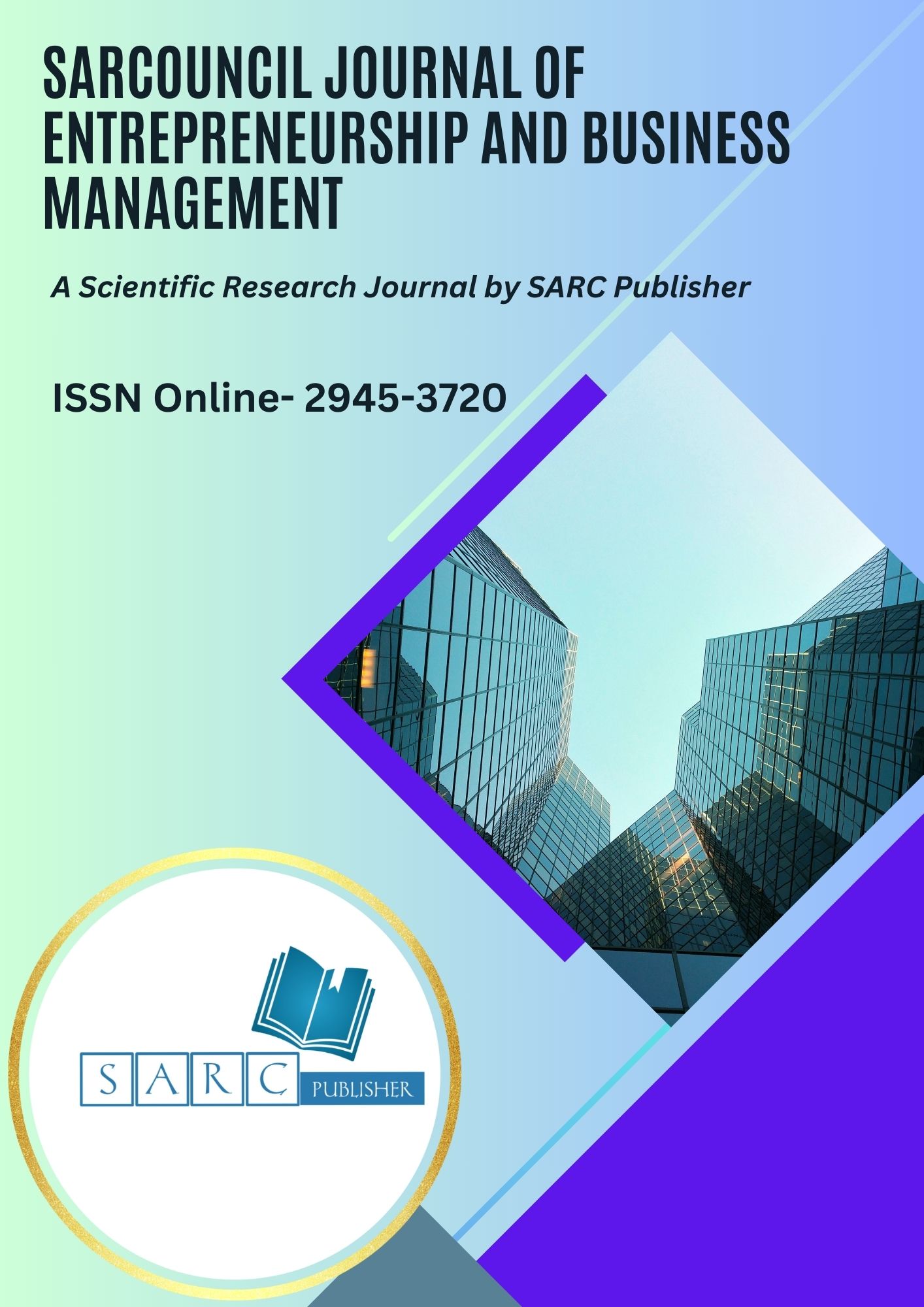Sarcouncil Journal of Entrepreneurship and Business Management

Sarcouncil Journal of Entrepreneurship and Business Management
An Open access peer reviewed international Journal
Publication Frequency- Monthly
Publisher Name-SARC Publisher
ISSN Online- 2945-3720
Country of origin- PHILIPPINES
Impact Factor- 4.1
Language- English
Keywords
- Education, Sociology, Social Sciences, Political Sciences, Mass Communication, Psychology, Art Education, Social Education, Adult Education, Education Administration, Educational Planning, Educational Theories, Educational Policy, Curriculum Study
Editors

Dr Ifeoma Christy
Associate Editor
Sarcouncil Journal of Entrepreneurship And Business Management

Dr Hazim Abdul-Rahman
Associate Editor
Sarcouncil Journal of Applied Sciences

Entessar Al Jbawi
Associate Editor
Sarcouncil Journal of Multidisciplinary

Rishabh Rajesh Shanbhag
Associate Editor
Sarcouncil Journal of Engineering and Computer Sciences

Dr Md. Rezowan ur Rahman
Associate Editor
Sarcouncil Journal of Biomedical Sciences

Dr Ifeoma Christy
Associate Editor
Sarcouncil Journal of Entrepreneurship And Business Management

Dr Hazim Abdul-Rahman
Associate Editor
Sarcouncil Journal of Applied Sciences
Economic Effects of the Globalisation of Civil Aviation
Keywords: Globalisation, Civil Aviation, Economic Effects
Abstract: This article discusses the economic effects of the globalisation of civil aviation. Globalisation may be perceived as the process of world integration through the integration of economies, cultures, technologies, and the governance of the world nations. Globalisation can narrowly be viewed as the international integration of markets in goods, services and capital. It involves the spread of economic transactions across borders; the organisation of economic activities at national borders; and the flow of financial markets around the world. Civil aviation is simply viewed as activities that are directly dependent upon transporting people and goods by air to, from or within a country, region or a continent. These activities include airline and airport operations and these operations cover scheduled and charter flights for passengers and freight, general aviation, airport maintenance, air traffic control and regulation. The existing body of empirical research on the globalisation of civil aviation indicates that the interaction between globalisation and civil aviation has had positive effects. For example, a study by Button (2008) on the United States showed that in 1978 the US airlines carried 275 million passengers; and in 2009, the airlines carried 770 million passengers. On the other hand, the advent of the globalisation of civil aviation has made airlines, airports and other aviation businesses become relatively borderless. Eventually, this has created stiff competition among civil aviation businesses. Accordingly, the survival of civil aviation firms depends on how the firms respond to the competition. For example, other firms have responded by establishing strategic alliances, relocating businesses, re-engineering business processes, diversifying product portfolios, and initiating research and development for competitive advantage.
Author
- Rutherford Chayima Kanunkha
- Research Scholar; UNICAF University Malawi
- Dr. Abhishek Tripathi
- Associate Professor; Department of Management & Information Systems; University of Ha’il; Kingdom of Saudi Arabia.

